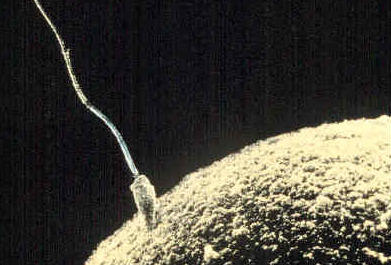No evidence sperm counts are dropping, researchers find
The widely held view that sperm counts in men are dropping around the world may be wrong, according to a new study by University of ���۴�ý, Queen’s University in Kingston, Canada and Cryos International, Denmark.
Using data from 6,758 men from four cities in Denmark applying to be sperm donors at the world’s largest sperm bank, Cryos International, the study is published in the journal Human Reproduction today (05/06/24).
Declining sperm counts, identified by two recent and influential meta-analyses - combining and synthesizing the results of previous studies – have become widely publicized in the mainstream media.
In the new study, however, statistical analysis of sperm samples provided by the men applying to be sperm donors showed that while the average sperm concentration varied from year to year, it did not change significantly over a six-year period.
Although Cryos was established over 40 years ago, the researchers limited their analysis to data collected between 2017 and 2022 to ensure methodological consistency in the measurements of sperm concentration and motility – its ability to swim spontaneously.
Co-author Professor Allan Pacey from The University of ���۴�ý said: “It is commonly believed by that sperm counts in men are falling.
“This is to some degree the result of meta-analysis published by Levine et al. (2023) which proposed that sperm concentrations worldwide had declined as much as 2.64% per year in unselected men since the year 2000.
“We did not see such a change and that suggests that in this population of sperm donor applicants, in these four Danish cities, sperm concentrations have not changed between 2017 and 2022”.
However, both the concentration and total numbers of motile (swimming) sperm provided for testing had declined by 16% and 22% respectively from 2019 to 2022.
It is commonly believed by that sperm counts in men are falling. This is to some degree the result of meta-analysis published by Levine et al. (2023) which proposed that sperm concentrations worldwide had declined as much as 2.64% per year in unselected men since the year 2000. We did not see such a change and that suggests that in this population of sperm donor applicants, in these four Danish cities, sperm concentrations have not changed between 2017 and 2022
Co-author Professor Robert Montgomerie said: “The decline in measures of sperm motility between 2019 and 2022 was an unexpected finding.
“This decline roughly corresponds to the onset of the worldwide COVID-19 pandemic.
“While there is no evidence to suggest that the SARS-CoV-2 virus is directly affecting sperm, we speculate whether the widespread lockdowns may have led to changes in working pattens, diet, and levels of physical activity which we already know can impact sperm motility.”
The study authors were not able to collect information on the health or lifestyles of the men applying to be sperm donors that could help to identify factors that may account for the decline in sperm motility.
However, they argue monitoring the semen quality in this population of sperm donor candidates could be a useful way to monitor changes in human semen quality over time and help answer the question whether sperm counts are declining or not.
Co-author Anne-Bine Skytte the Medical Director of Cryos International said: “Men who apply to be sperm donors are doing so in order to help women and couples achieve their family wishes.
“We have no way of knowing how random this sample is with respect to the general (Danish) population, but this study shows that another altruistic outcome of applying to be a sperm donor is how the data can now be used to help answer big science questions, like whether sperm counts are declining or not.
“This is an unexpected benefit of their generosity.”
The paper Recent decline in sperm motility among donor candidates at a sperm bank in Denmark is available here
